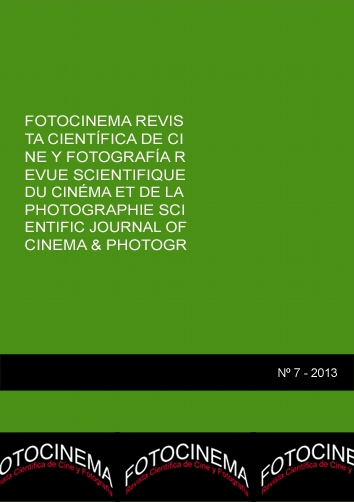Música que hace cine: el compositor Zbigniew Preisner
DOI:
https://doi.org/10.24310/Fotocinema.2013.v0i7.5934Abstract
En este trabajo nos proponemos reflexionar sobre la relación entre música y cine a través del análisis de la trilogía cinematográfica Tres colores (Trois Couleurs) del realizador Krzysztof Kieslowski y del compositor Zbigniew Preisner. Tras su análisis concluimos que, en casos como el que nos ocupa, la fusión y entendimiento entre ambos campos artísticos, preservando su autonomía, alcanza cotas ciertamente relevantes y subyugantes. En todo caso, destacamos que cuando este género musical adquiere entidad per se, puede llegar a producir auténticas obras maestras.This paper aims to reflect on the relationship between music and cinema through the analysis of the film trilogy Three Colors (Trois Couleurs) by the filmmaker Krzysztof Kieslowski and the composer Zbigniew Preisner. After analysis we conclude that, in cases like the present one, fusion and understanding between the two fields of art, preserving their autonomy, reaches heights certainly relevant and captivating. In any case, we note that when this genre acquired entity per se, can produce masterpieces.
Palabras clave: Música en el cine, bandas sonoras, compositores cinematográficos, Zbigniew Preisner, Krzysztof Kieslowski, la Trilogía de los Tres Colores.
Keywords: Film music, soundtracks, film composers, Zbigniew Preisner, Krzysztof Kieslowski, the Three Colors Trilogy.
Downloads
Metrics
Downloads
Published
How to Cite
Issue
Section
License
All contents published in Fotocinema Revista científica de cine y fotografía are protected under the Creative Commons Attribution-NonCommercial-ShareAlike 4.0 International (CC BY-NC-SA 4.0) license. All about this license is available in the following link: <http://creativecommons.org/licenses/by-nc-sa/4.0>
Users can copy, use, redistribute, share and exhibit publicly as long as:
- The original source and authorship of the material are cited (Journal, Publisher and URL of the work).
- It is not used for comercial purposes.
- The existence of the license and its especifications are mentioned.
There are two sets of authors’ rights: moral and property rights. Moral rights are perpetual prerogatives, unrenounceable, not-transferable, unalienable, imprescriptible and inembargable. According to authors’ rights legislation, Fotocinema. Revista científica de cine y fotografía recognizes and respects authors moral rights, as well as the ownership of property rights, which will be transferred to University of Malaga in open access. The property rights are referred to the benefits that are gained by the use or the dissemination of works. Fotocinema. Revista científica de cine y fotografía is published in an open access form and it is exclusively licenced by any means for doing or authorising distribution, dissemination, reproduction, , adaptation, translation or arrangement of works.
Authors are responsable for obtaining the necessary permission to use copyrighted images.













13.png)




